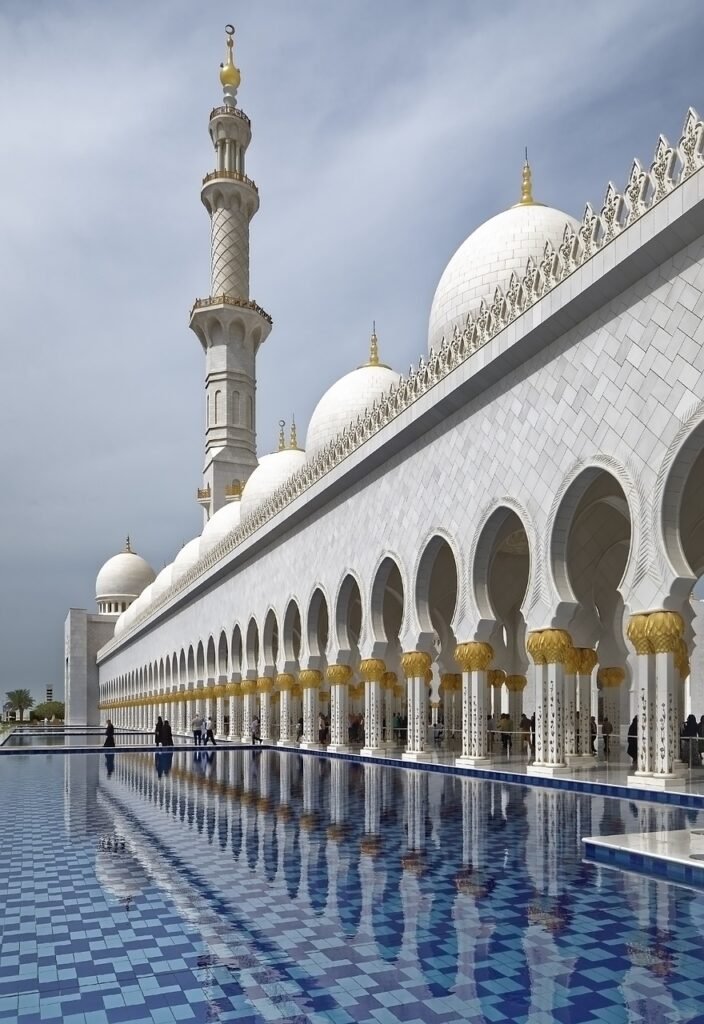
Abu Dhabi, the capital of the United Arab Emirates (UAE), has a rich history that spans centuries. Here’s a detailed overview:
Prehistoric and Ancient Times
- Stone Age to Bronze Age: Archaeological evidence suggests human presence in the Abu Dhabi region dating back to the Stone Age. The discovery of artifacts from the Bronze Age indicates that the area was inhabited by early civilizations.
Early History
- First Mention: The name Abu Dhabi, meaning “Father of the Gazelle,” is derived from the abundance of gazelles in the area. The Bani Yas tribe, which is central to Abu Dhabi’s history, settled in the region around the 18th century.
18th and 19th Centuries
- Bani Yas Tribe: The Bani Yas, a powerful tribal confederation, migrated to Abu Dhabi in the mid-18th century. The Al Nahyan family, part of the Bani Yas tribe, established themselves as leaders and continue to rule Abu Dhabi today.
- Pearling Industry: During the 19th century, Abu Dhabi’s economy was primarily based on pearl diving. This industry flourished, bringing wealth and trade to the region.

Early 20th Century
- British Influence: The British established a presence in the Gulf in the 19th and early 20th centuries, signing treaties with local rulers. Abu Dhabi became part of the Trucial States, a British protectorate, in the early 20th century.
- Oil Discovery: In the 1930s, oil exploration began in the region. The first commercial oil discovery was made in 1958, significantly transforming Abu Dhabi’s economy.
Mid-20th Century to Independence
- Sheikh Zayed bin Sultan Al Nahyan: In 1966, Sheikh Zayed became the ruler of Abu Dhabi. He played a crucial role in the formation of the United Arab Emirates.
- Formation of the UAE: On December 2, 1971, Abu Dhabi, along with six other emirates, formed the United Arab Emirates. Abu Dhabi became the capital of the new nation.
Post-Independence Era
- Economic Development: Post-independence, Abu Dhabi experienced rapid development. Revenues from oil exports funded infrastructure projects, modernization, and diversification of the economy.
- Political Role: Abu Dhabi has maintained a significant political role within the UAE, with the ruling Al Nahyan family providing leadership. Sheikh Zayed served as the first President of the UAE until his death in 2004. His son, Sheikh Khalifa bin Zayed Al Nahyan, succeeded him.
Modern Era
- Diversification Efforts: In recent years, Abu Dhabi has made efforts to diversify its economy beyond oil. Investments in tourism, culture, and renewable energy have been prioritized.
- Cultural Initiatives: Projects like the Louvre Abu Dhabi and the development of Saadiyat Island as a cultural district highlight Abu Dhabi’s commitment to becoming a cultural hub.
Key Developments
- Infrastructure: Abu Dhabi has developed world-class infrastructure, including the Abu Dhabi International Airport, modern road networks, and iconic buildings like the Emirates Palace and Etihad Towers.
- Environmental Initiatives: Projects like Masdar City, a planned city emphasizing sustainability, showcase Abu Dhabi’s efforts in environmental conservation and innovation.
Abu Dhabi’s history is marked by transformation from a modest pearling village to a modern, wealthy, and influential global city. The emirate’s leadership has played a pivotal role in shaping its path, focusing on both preserving its heritage and embracing modernity
Very good place
This blog is fine, i love it
It was very helpful ❤️❤️
It was very helpful ❤️❤️❤️
Thank you for your interesting information ❤️
Your spaces is very nice.